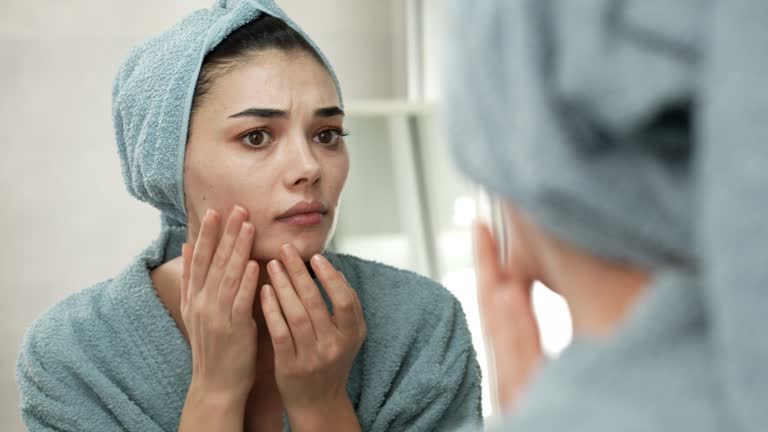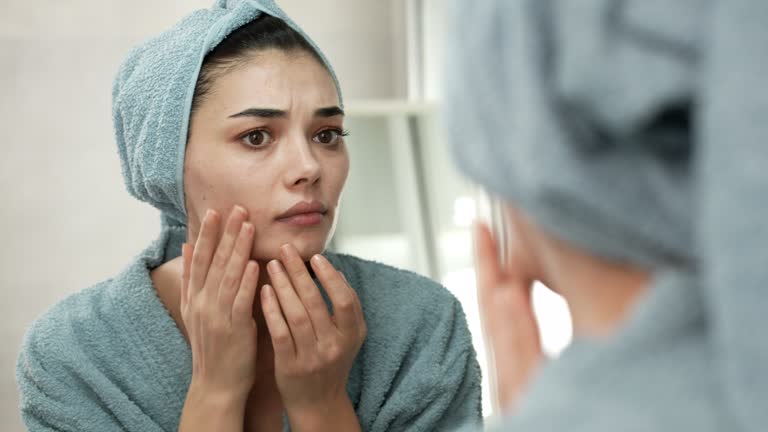Understanding Folliculitis in People with Curly Hair
As a beautician, you're likely familiar with the unique challenges that come with caring for curly hair. One such challenge is managing folliculitis, an often irritating skin condition that can disproportionately affect those with curly locks. This article will delve deep into the causes, prevention, and treatment of folliculitis in people with curly hair, offering valuable insights for beauticians looking to provide the best care for their clients.

What is Folliculitis?
Folliculitis is the inflammation of hair follicles, which can result in red, bumpy skin. It often resembles an acne breakout and can be quite uncomfortable. This condition is caused by bacteria, fungi, or even an ingrown hair. For those with curly hair, the natural twists and turns of the strands can make them more prone to ingrown hairs, thus increasing the risk of folliculitis.
Why Curly Hair is More Susceptible
The structure of curly hair naturally makes it more prone to folliculitis. Curly hair tends to grow back into the scalp, creating a fertile ground for bacteria to thrive. Moreover, the natural oils produced by the scalp may not travel down the hair shaft as easily, leading to clogged follicles. This combination of factors often results in a higher prevalence of folliculitis among those with curly hair.
Common Triggers for Folliculitis
Several factors can trigger or exacerbate folliculitis in people with curly hair. These include:
- Improper Hair Care: Using harsh shampoos or not cleansing the scalp properly can irritate the skin and lead to folliculitis.
- Friction: Tight hairstyles or friction from hats and helmets can aggravate the hair follicles.
- Excessive Sweating: Sweat can clog hair follicles, especially if it's not washed away promptly. Learn more about how managing sweat can help prevent folliculitis.
- Skin Conditions: Existing conditions like eczema or dermatitis can make the skin more vulnerable to folliculitis.
Preventing Folliculitis in Curly Hair
Prevention is always better than cure, especially when it comes to managing folliculitis in curly-haired clients. Here are some tips to help prevent this skin condition:
Gentle Hair Care Routine
Adopting a gentle hair care routine is crucial. Use sulfate-free shampoos and conditioners designed for curly hair to minimize irritation. Additionally, ensure your clients are not overwashing their hair, as this can strip the scalp of essential oils.
Proper Hair Drying Techniques
Encourage your clients to pat their hair dry with a soft towel instead of rubbing it vigorously. Air drying is preferable, but if they must use a blow dryer, recommend a diffuser to minimize heat damage.
Choose the Right Hairstyles
Suggest hairstyles that minimize tension on the scalp. Loose braids or natural styles can help reduce the risk of folliculitis. Avoid tight ponytails or buns that can cause friction and irritation.
Treatment Options for Folliculitis
If a client does develop folliculitis, there are several treatment options that can help alleviate their discomfort:
Topical Treatments
Topical antibiotics or antifungal creams can effectively treat mild cases of folliculitis. It's important to remind clients to follow the instructions carefully and complete the entire course of treatment.
Oral Medications
For more severe cases, oral antibiotics may be necessary. It's essential for clients to consult with a healthcare provider to determine the best course of action. For more information on medications, visit prescription medications for folliculitis.
Home Remedies
Some clients may prefer natural remedies. Warm compresses, tea tree oil, and aloe vera gel are popular choices for soothing irritated skin. However, it's crucial to ensure that clients are not allergic to any of these remedies before use.
When to Seek Professional Help
If a client's folliculitis does not improve with home treatment, it may be time to seek professional help. Persistent or severe cases may require the expertise of a dermatologist. Encourage your clients to listen to their bodies and not ignore persistent symptoms.
Conclusion
Understanding and managing folliculitis in people with curly hair is vital for beauticians aiming to provide comprehensive care for their clients. By incorporating the right techniques and products, you can help your clients maintain healthy, beautiful hair while minimizing the risk of this irritating condition. For more in-depth information on related topics, check out our article on viral infections and folliculitis.

FAQs
Q: Can folliculitis in curly hair be completely cured?
A: While folliculitis can often be treated effectively, recurrences are possible, especially if the underlying causes are not addressed. Proper hair care and lifestyle adjustments can significantly reduce the risk.
Q: Are there any specific products recommended for curly hair prone to folliculitis?
A: Products that are gentle, sulfate-free, and designed for curly hair are recommended. Look for scalp treatments that contain soothing and antibacterial ingredients like tea tree oil.
Q: How can I tell if a bump on my scalp is folliculitis or something else?
A: Folliculitis typically appears as small red bumps that may be itchy or tender. If you're unsure, it's best to consult a healthcare professional for an accurate diagnosis. For more details on folliculitis, visit Healthdirect.

